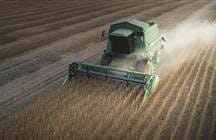The term ‘off-highway’ covers a wide range of machinery and equipment that operate in harsh working environments where dust, water and even chemicals can be prevalent. Suppliers of components destined to work in these unforgiving applications need to offer high quality products that are rigorously tested and fit for purpose.
Mourade Vaneeckhoutte, Director for Mobile Power Equipment at Altra Industrial Motion Corporation, looks at the challenges faced by components used in off-highway applications.
Throughout this sector, lifting and positioning tasks are performed by actuators that may be powered by hydraulic, pneumatic or electrical energy. The selection of the most appropriate design is affected by a number of factors and in many cases the electric actuator has many advantages.
Design integration
For original equipment manufacturers (OEMs) the process of designing new equipment is very complex and involves a huge amount of resources. In most cases, third-party suppliers will be required to contribute their expertise to the process and ensure that their components integrate with the overall design.
Warner Linear has been helping OEMs in the off-highway sector for many years to find the best solution for their design specifications. Linear actuators are well-suited to the demanding applications that are so often encountered in this area.
From the outset, linear actuators offer extremely efficient operation; a high performance electric motor combined with a high efficiency gear train, hardened as standard, and high quality ball screw and ball nut drive. The products are extremely durable and require very little maintenance which, makes them ideally suited to off-road applications.
Durability through design
The standard designs provide load capacities from 200 – 21,000 Newtons and are usually specified for heavy duty applications. The overall construction of the actuators is designed to minimise any maintenance requirements and to reduce their life-time costs, improve productivity and perform in harsh operating conditions.
One of the major design features are the seals that have enabled all of Warner Linear’s actuators to have an ingress protection rating of IP69K when static and IP66 when dynamic. The lesser known IP69K rating ensures that equipment is suitable for wash down with high pressure, high temperature water.
Of equal importance is the range of options and configurations that can be specified to make every component a perfect fit. From mounting and end fitting variations, to the addition of limit switches and position sensors, the flexibility of the design process means that every detail can be optimised to a particular application.
Working closely with OEM designers, Warner understands that actuators play a crucial role in the performance of off-highway equipment and by building a direct line of communication it is possible to realise the best solution. Through a better understanding of the application, it is possible to create the most durable and cost effective component.
Comprehensive testing
This is supported by the comprehensive design and testing facilities that are applied to all products, including bespoke designs. In-house testing includes repetitive cycle testing, dual load life cycling, high pressure washdown, lift testing and thermal shock submersion.
In addition, Warner can provide material analysis as well as noise and vibration evaluations. Using a combination of computer-aided testing and field testing provides OEMs with the necessary assurances of long-lasting reliability.

From heavy duty performance in construction machinery to the dust-laden environment in agriculture, linear actuators are required to perform in a wide range of situations.

Warner Linear’s actuators have an ingress protection rating of IP69K when static and IP66 when dynamic.
From heavy duty performance in construction machinery to the dust-laden environment in agriculture, linear actuators are required to perform in a wide range of situations. Having the design flexibility and manufacturing capabilities to create prototypes quickly is very advantageous; offering short lead times and lean manufacturing performance means OEMs are assured of high quality components as they require them.








